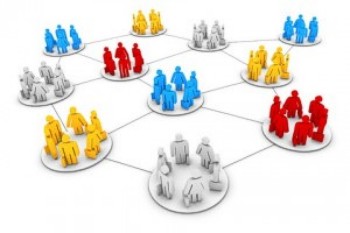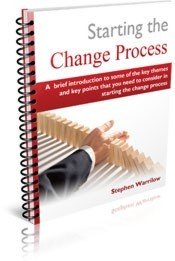|
Open Space TechnologyHow To Create Inspired Meetings
Open Space Technology, created by Harrison Owen, is a self-organising practice that releases the inherent creativity and leadership in people.
I have had no direct personal experience of this, but it appears to me to be a very powerful way of unlocking ideas and solutions. It is a proven process that has been in use for over 20 years all around the globe.
The following information was excerpted from Harrison Owen's book "Open Space Technology", and the
Open Space World website What is Open Space Technology (OST)?By inviting people to take responsibility for what they care about, Open Space establishes a marketplace of inquiry, where people offer topics they care about, reflect and learn from one another, to accomplish meaningful work. It is recognized internationally as an innovative approach to creating whole systems change and inspiring the best in human performance.
It is also fun. In a word, the conditions are set for fundamental organizational change, indeed that change may already have occurred. By the end, groups face an interesting choice. They can do it again, they can do it better, or they can go back to their prior mode of behaviour. Open Space is appropriate in situations where a major issue must be resolved, characterized by high levels of complexity, high levels of diversity (in terms of the people involved), the presence of potential or actual conflict, and with a decision time of yesterday. Open Space runs on two fundamentals: passion and responsibility. Passion engages the people in the room. Responsibility ensures things get done. A focusing theme or question provides the framework for the event. The art of the question lies in saying just enough to evoke attention, while leaving sufficient open space for the imagination to run wild. Open Space Technology has one outstanding characteristic - the generation of energy and commitment. It also has one outstanding enemy - control. It will not work where the energy and commitment generated are not permitted to bear fruit. This is not to suggest that OST is an invitation to anarchy. Far from it. Provided the constraints -economic, political, legislative - are recognized and spelt out very clearly at the start, and the areas where discretion and freedom to be creative ("defining the space") are also made clear, Open Space Technology is proving itself to be a powerful tool for harnessing commitment and responsibility. Several organisation-wide Open Space Technology meetings within a short time frame will start to shift an organisational culture from something that might be de-energized into a more vibrant organic networked community that is effectively producing results.
Open Space Operates on Four Principles and One Law
These principles are simple statements of the way things work. While they may appear counter-intuitive to some, they are my observations of what always happens when people interact. The one law or rule is called The Law of Mobility, also known as The Law of Two Feet. The Law of Two Feet says to stand up for what you believe and if you feel you are neither contributing nor learning where you are, use your two feet and go somewhere else. The law is fundamentally about personal responsibility. It makes it clear that the only person responsible for your experience is you.
The Mechanics of Open SpaceAn Open Space meeting is announced. A duration of three days is recommended. The venue is a large conference room with lots of "break-out" or session rooms or areas adjacent. When people arrive for the Open Space Technology meeting, they initially come to the plenary room and find a venue in which there is an empty room, except for a large circle of chairs. The circle is an invitation to communication with no barriers. The workshop begins with a welcome by the sponsor that is brief, highlighting the theme and the "givens," and then a facilitator explains how the Open Space Technology workshop will operate. The broad purpose of the workshop is stated again, as are the "givens" or constraints. An example of a broader theme might be "Issues and Opportunities for the Future of the Organization." Sometimes the broad purpose is quite focused such as "Issues and Opportunities for reworking the assembly line." In the middle of the circle is a collection of newsprint paper, masking tape, and felt pens. Participants are then invited to create the agenda for the workshop. It works like this.
Open Space Technology ResourcesOpen Space World site offers an open invitation to connect with the people and practices, insights and experiences that are showing up in worldwide open space. This site was created in the spirit of the simple, powerful functionality that is Open Space Technology - to provide easy access to the growing number of Open Space organizations, practitioners and resources available on the web.
Check out these additional and very practical resources on this site:
Process theories of motivation - Personal needs drive behaviour Employee motivation techniques - How to achieve peak performance Theory U: leading from the future as it emerges How to give negative feedback - Without destroying the other person Toxic leadership - How to spot it and how to avoid it Return to Inspirational Motivation Home Page
|



 At the very least, Open Space is a fast, cheap, and simple way to better, more productive meetings. At a deeper level, it enables people to experience a very different quality of organisation in which self managed work groups are the norm, leadership a constantly shared phenomenon, diversity becomes a resource to be used instead of a problem to be overcome, and personal empowerment a shared experience.
At the very least, Open Space is a fast, cheap, and simple way to better, more productive meetings. At a deeper level, it enables people to experience a very different quality of organisation in which self managed work groups are the norm, leadership a constantly shared phenomenon, diversity becomes a resource to be used instead of a problem to be overcome, and personal empowerment a shared experience. 


